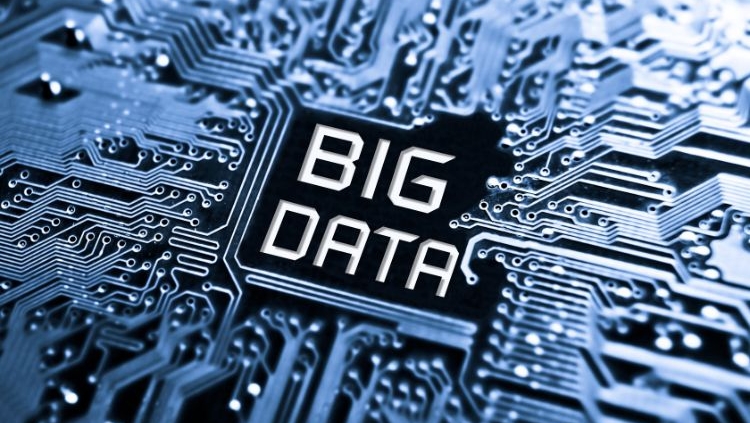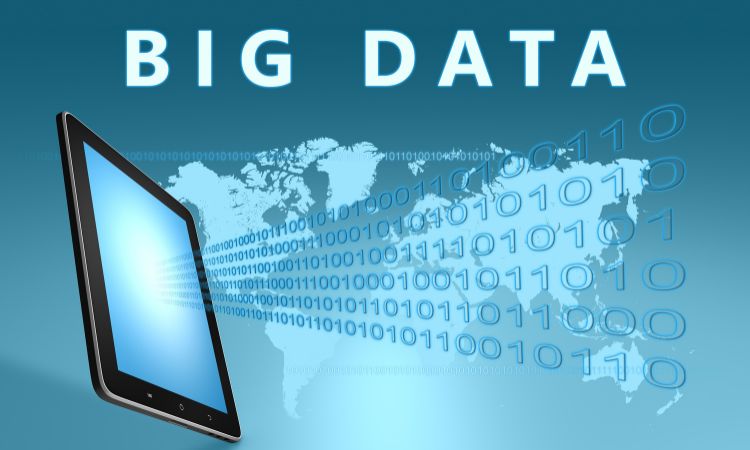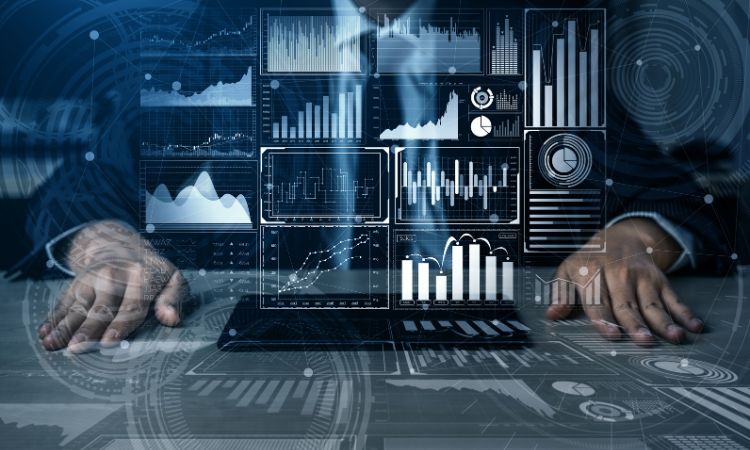What is the Role of Big Data in Algorithmic Trading?
When computer processing power increased, algorithmic trading became synonymous with large amounts of data. Computer programs can make transactions at speeds and rates impossible for a human trader to reach when financial trades are automated.
Under the rules of the mathematical models, algorithmic trading allows deals to be made at the best prices and at the right time. This reduces the number of mistakes made by hand because of human behavior.
Role of Big Data in Algorithmic Trading: Big data is an important part of algorithmic trading because it gives traders the data sets they need to build and test trading algorithms.
What is Big Data?
Big data is a term for the large, complicated data sets that are becoming more and more common in the world today. As the name suggests, big data needs to be bigger and more straightforward than traditional ways of processing data.
Algorithmic trading is a type of trading done with computer programs’ help. These programs are made to find trading opportunities and make trades independently. In high-frequency trading, where exchanges are made quickly, algorithmic trading is often used.
What is algorithm trading in big data?
“Big data” algorithmic trading is the process of making trading strategies based on large sets of data. In “big data,” algorithms are used to look at market trends and make predictions about them. You can use this information to figure out when to buy or sell stocks.
- Algorithmic trading is becoming more popular as more companies get access to large data sets.
- Algorithmic trading is a way of trading that is based on data and uses math models and algorithms to figure out when and how to trade.
- Stocks, options, futures, and other financial instruments can all be traded using algorithmic trading systems.
- Big data is an important part of algorithmic trading because it gives traders the data sets they need to build and test trading algorithms.
- Big data can also be used to track market activity in real time and find trading opportunities.
Big Data Role in Algorithmic Trading
In recent years, big data has become increasingly important in finance. Algorithmic trading, which uses computer programs to make trading decisions, is one area where big data has played a significant role.
Big data can be used in algorithmic trading in several ways.
- One is through machine learning, a type of artificial intelligence that can be used to identify patterns in data automatically.
- This can be used to predict future market movements, which can help traders make more informed decisions about when to buy and sell.
- Another way big data can be used in algorithmic trading is through social media data. This can include things like tweets from financial analysts or posts on online forums.
- This data can be used to understand investor sentiment and how this might impact future market movements.
- Overall, big data plays a significant role in algorithmic trading. It helps traders make more informed decisions and can even be used to predict future market movements automatically.
How is big data being used in trading?
Big data is used in trading in several different ways. One way is that big data helps make better models for determining what will happen in the market.
Traders can use these models to help them decide when to buy and sell more informedly.Big data is also used in trading to help find opportunities to use arbitrage.
Arbitrage is using price differences in different markets to your advantage. Traders can find these opportunities and make money more easily using big data.
Last, big data is also used to improve how trades are made. If traders know more about the market, they can make transactions faster and at better prices.
Why is big data so important for trading?
In the past, trading was primarily based on how people thought and what they felt. But since the rise of “big data,” algorithmic trading has become increasingly common.
- Big data is essential for trading because it can be used to find trends and guess how the market will move in the future.
- Algorithmic trading is a type of trading in which trades are made based on signals produced by a computer. This type of trading can be faster and more accurate than human-based trading, often based on gut instinct and experience.
- Traders can decide when to buy or sell security better when they use big data in algorithmic trading.
- Traders can find patterns and relationships that they might not have been able to see with the naked eye by looking at a lot of data.
- Big data can also be used to test trading strategies in the past to see how well they would have worked.
- Overall, traders wanting to get a leg up on the market must use big data. Traders can improve their chances of success and lower their risk by making decisions based on big data.
What are the algorithmic trading data strategies?
Several algorithmic trading data strategies can be used to make the best and most profitable stock market investments. The most important thing to remember is that “big data” doesn’t always mean “more data. It’s more about finding the right data sets and using them well.
Data mining:
“Data mining” is a common strategy that involves searching a lot of data to find hidden patterns or trends. Then, this information can be used to predict how the market will move and develop trading plans based on those predictions.
Backtesting:
Backtesting is another popular strategy. This is when you use data from the past to see how well a trading strategy would have worked in the past.
This is an excellent way to determine if a system is likely to make money before putting real money on the line.
Regardless of your strategy, it’s essential to remember that big data is only as valuable as your ability to understand and use it well. The best traders can combine their gut feelings with complex data to make consistent profits.
Index Fund Rebalancing:
The portfolios of index funds, which are a type of mutual fund, are updated regularly to reflect the new prices of the fund’s underlying assets, such as stocks and bonds.
The “rebalancing” allows algorithmic traders to make money on expected trades based on the number of stores in the index fund.
Algos and Arbitrage:
Arbitrage takes advantage of slight price differences between two exchanges for the same security.
Buying a stock listed in both Market A and Market B at a discount and selling it at a premium in Market B is a risk-free way to make money through arbitrage.
Arbitrage can only happen when stocks and other financial products are traded electronically. Also, the transactions should happen simultaneously to reduce market risk, which is the chance that the price of one market will change before both are finished.
Mean Reversion:
Mean reversion is a mathematical method used in stock investing to find the average of a stock’s temporary high and low prices. It means figuring out a stock’s trading range and average price using analytical techniques.
When the current market price is lower than the average, the stock is considered attractive because the price might increase.
On the other hand, when the current market price is higher than the average price, investors don’t want to buy the stock because they think the price will fall back to the average price.
The standard deviation of a stock’s recent prices indicates whether to buy or sell. Algos are often used for trading around mean reversion.
Market Timing:
Market timing strategies are designed to make alpha using a method that includes live testing, backtesting, and forward testing.
Backtesting is the first step of market timing. It involves simulating hypothetical trades during an in-sample data period.
Essential Components of an Algorithmic Trading
When it comes to algorithmic trading, big data can help in many different ways. The most obvious way is to look at how the trade is made.
- Algorithmic traders use data feeds to get the most up-to-date information on prices and liquidity so that they can make trades as quickly and accurately as possible.
- Big data can also be used in algorithmic trading to develop and test trading strategies against the past. To build a solid system, you need a lot of historical data so you can test your ideas and see how they would have worked in different market conditions.
- Finally, big data can be used to track the performance of algorithmic trading systems. By monitoring how trades go in real-time, you can see where your system might be failing and make the necessary changes.
Conclusion
In the world of algorithmic trading, big data is becoming more and more critical. By definition, algorithmic trading is when computers use complex algorithms to make trading decisions on their own.
Big data plays two different roles in algorithmic trading. First, you can use big data to make the algorithms themselves. Traders use data mining and machine learning to create models that predict how the market will act.
Second, these algorithms can be tested with big data before they are used in trading. Backtesting lets you use data from the past to try to figure out how an algorithm would have worked in the past.
By focusing on Asset Revesting Entrepreneurs strategy on ETFs—funds holding multiple instruments meant to mimic an index. Since indexes have more identifiable patterns, they are generally more reliable than individual stocks.





